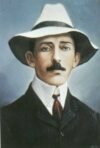5 Steps to Becoming a Pilot
Think you don't have the money or the time to learn to fly? Training to be a pilot can mean expensive instruction fees, high gas prices and maintenance charges, and it can require many hours of flight time. But becoming a pilot doesn't have to be out of reach. By planning ahead and making strategic decisions, anyone can become a licensed pilot. Just follow these steps:
1. Research, research, research Many aspects of the student pilot process require you to do your homework, and with all of the information available on the internet there is no excuse for you to spend a penny more than you have to. By accessing free pilot resources online (at FAA.org, for example) you will save on the cost of expensive printed materials. And if you do enough studying on your own you may not need to pay for ground school to pass the pilot's test.
2. Explore every option By investigating all of the ground schools and pilot programs in your area and weighing all of the associated costs, you will get the best possible instruction for the least amount of money. Small, rural airports often give quality instruction and lower rates than bigger airports. Also, flight schools in places like Florida, Arizona, and Texas have good weather year-round that will enable you to train two to three times a week. Consistent training is crucial to making progress and will help you retain new skills from week to week. Inconsistent training will cause you to forget things that might've otherwise been fresh in your mind. If you go to Arizona or Florida you can actually get your Private Pilot License for $5k to $8k in 14 to 30 days. Choosing the right place to learn can save you money, get you better instruction, and give you more flexibility with flight schedules.
3. Become a part of the aviation community Get engaged in the aviation world by visiting websites and blogs online and participating in discussions. Join the Aircraft Owners and Pilots Association (AOPA) to stay informed about the latest issues affecting the flying community. Get involved with the Experimental Aviation Association (EAA), an excellent source of information about homebuilts like the light sport aircraft (LSA) so popular right now. Or join a local flying club. Networking with other aviation enthusiasts both on- and offline will create more flying opportunities.
4. Use a flight simulator While practice flying a real plane is ideal, it's not always practical. Flight simulators are a great way to keep your mind in flight mode and to sharpen your aviation skills. Student pilots who exercise their flight skills frequently using methods like flight simulators often learn faster and perform better than pilots who rely solely on actual flight time.
5. Buy an older airplane Buying a brand new piston or jet aircraft is probably not financially feasible for many would-be fliers, but don't let that stop you. There is a big market for older, used aircraft, and with determination and discipline, anyone can save up and purchase their own plane.















